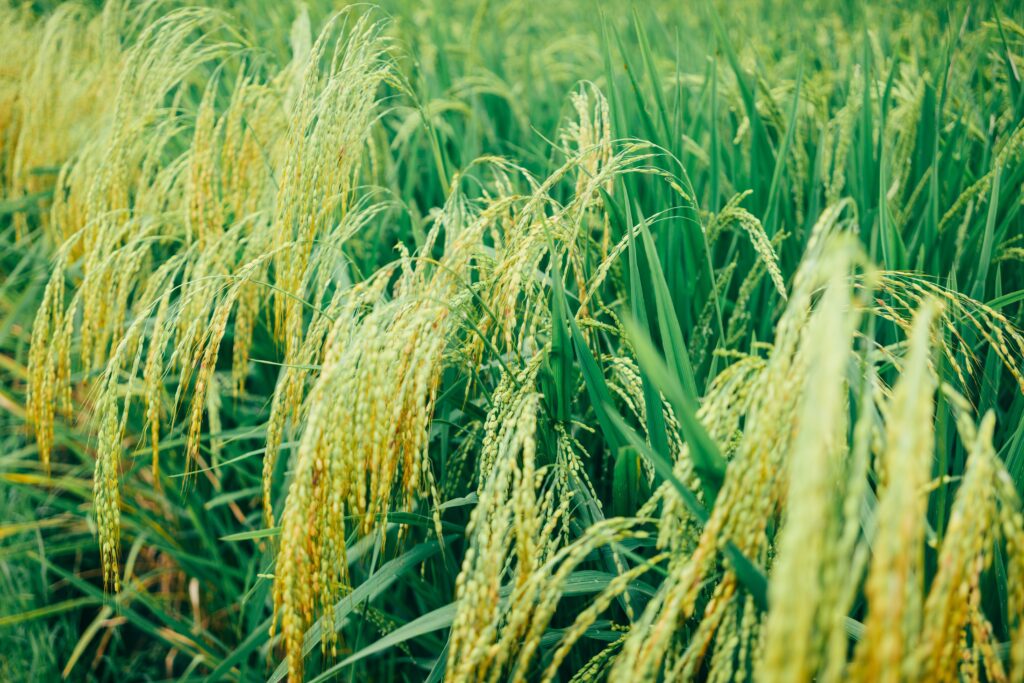Low Glycemic Foods
Low Glycemic Foods: Your Key to Sustainable Weight Loss
In the ever-evolving landscape of diets and nutrition, the quest for an effective, sustainable approach to weight loss can often feel like navigating a maze without a map. Amidst the cacophony of conflicting advice, one concept has emerged as a beacon of clarity: the low-glycemic index (GI) diet. At its core, this dietary approach revolves around the glycemic index, a tool that ranks foods based on their impact on blood sugar levels. But what exactly is the low-GI diet, and what lies behind the claims surrounding its efficacy?
In this exploration, we embark on a journey from understanding the fundamentals of the glycemic index to dissecting the science behind low-GI foods. We’ll delve into the intricacies of this eating plan and shed light on its practical implications for individuals striving to achieve sustainable weight loss and optimal well-being.
Join us as we navigate the realm of nutrition, armed with knowledge and insight, to unlock the secrets of the low-glycemic index diet and pave the way toward a healthier, happier future.
Understanding Low Glycemic Foods
These are the goodies that don’t send your blood sugar on a rollercoaster ride after you eat them. Moreover, It all comes down to something called the glycemic index (GI), which is like a rating system for how different foods affect your blood sugar levels.
Imagine a scale from 0 to 100. Foods with a high GI (above 70) are like speed demons – they’re quickly digested and cause your blood sugar to spike. On the flip side, low glycemic foods, with a GI below 55, take their time to break down, giving you a slow and steady release of energy.
Now, let’s talk about the delicious stuff. Low glycemic foods come in all shapes and sizes, from hearty legumes to crunchy veggies, whole grains, nuts, seeds, and even some fruits. They’re like a treasure trove of nutrients, offering everything your body needs to thrive.

Some of Low Glycemic Foods
Whole grains are like the superheroes of the low GI world. They give you that lasting energy boost without the crash, thanks to their complex carbs. And don’t forget about nuts and seeds – they’re packed with good fats and fiber, keeping you full and satisfied.
Now, let’s chat about fruits. Sure, they’re sweet, but not all fruits are created equal on the glycemic scale. Berries, with their vibrant colors and antioxidant powers, are among the low GI champs, giving you that fruity fix without the sugar rush.
When you embrace low glycemic foods, it’s not just about managing your blood sugar. It’s about nourishing your body from the inside out, supporting your heart health, keeping your weight in check, and even lowering your risk of chronic diseases.
So, whether you’re whipping up a cosy lentil soup or digging into a crisp salad, every bite of low glycemic goodness is a step towards a healthier, happier you. It’s about savouring the flavours, fueling your body, and living your best life – one delicious bite at a time.
The Link Between Low Glycemic Foods and Weight Loss
There is a fascinating relationship between low glycemic foods and weight loss. It’s a connection that goes beyond simply counting calories. Also about understanding how different foods impact our bodies and ultimately influence our ability to shed those stubborn pounds.
High glycemic foods are akin to quick-burning fuel; they cause our blood sugar levels to spike, giving us a sudden burst of energy followed by a crash. Consequently, this rollercoaster ride often leaves us feeling hungry and craving more food, leading to overeating and weight gain. On the flip side, low glycemic foods provide a more sustained source of energy. They’re like slow-burning fuel that keeps us feeling satisfied and full for longer periods, thereby making it easier to stick to a calorie-controlled diet.
Imagine starting your day with a sugary cereal versus a bowl of oatmeal. The cereal sends your blood sugar soaring, leaving you hungry and craving snacks before lunchtime. But the oatmeal, with its complex carbohydrates and fiber, keeps you feeling full and energized until your next meal. It’s these small dietary changes that can make a big difference when it comes to weight loss.
Research backs up the benefits of low glycemic diets for weight loss. One study published in the New England Journal of Medicine compared the effects of a low glycemic diet to a low-fat diet over a 12-month period. The results were clear: participants on the low glycemic diet experienced greater reductions in body weight and waist circumference compared to those on the low-fat diet. This highlights the importance of not just focusing on cutting fat, but also paying attention to the quality of carbohydrates we consume.

Low Glycemic Foods Can Be a Savior
But the benefits of low glycemic foods extend beyond weight loss. They also play a crucial role in improving overall health and reducing the risk of chronic diseases like diabetes and heart disease. By stabilizing blood sugar levels and preventing insulin spikes, low GI foods help to maintain a healthy metabolism and reduce inflammation in the body. This, in turn, can lead to lower cholesterol levels, improved cardiovascular health, and better blood sugar control.
So, how can you incorporate more low glycemic foods into your diet? It’s easier than you might think. Start by swapping out refined grains like white bread and pasta for whole grain alternatives like brown rice, quinoa, and whole wheat bread. Load up on colorful fruits and vegetables, which are naturally low in glycemic index and packed with vitamins, minerals, and antioxidants. And don’t forget to include plenty of lean protein sources like chicken, fish, tofu, and beans to help keep you feeling full and satisfied.
The link between low glycemic foods and weight loss is undeniable. By choosing nutrient-rich, low GI options, you can fuel your body with the energy it needs while promoting satiety and reducing cravings. So, the next time you’re planning your meals, remember to reach for those slow-burning, blood sugar-friendly foods. Your waistline – and your overall health – will thank you for it.
Benefits of Choosing Low Glycemic Foods for Weight Loss:
When it comes to weight loss, low glycemic foods offer a multitude of benefits that extend beyond simply shedding pounds. Let’s delve into each of these advantages in more detail:
1. Sustained Energy Levels:
Low glycemic foods are known for their ability to provide a steady stream of energy throughout the day. Unlike high glycemic foods, which can lead to energy crashes and feelings of fatigue, low GI options help maintain consistent energy levels. By choosing these foods, you can combat midday slumps and promote alertness without experiencing the highs and lows associated with sugar spikes.
2. Reduced Cravings and Hunger Pangs:
One of the primary advantages of low glycemic foods is their remarkable ability to increase feelings of fullness and satiety. By stabilizing blood sugar levels and preventing rapid fluctuations, these foods effectively curb cravings and reduce the urge to overeat. Consequently, incorporating low GI options into your diet can significantly contribute to making it easier to resist unhealthy snack cravings and maintain control over your calorie intake, thereby ultimately supporting your weight loss efforts.
3. Improved Insulin Sensitivity:
Opting for low glycemic foods can have a positive impact on insulin sensitivity, a crucial factor in regulating blood sugar levels. By minimizing spikes in blood sugar, these foods support optimal insulin function, reducing the risk of insulin resistance and type 2 diabetes. Improved insulin sensitivity not only promotes better blood sugar control but also helps prevent weight gain and metabolic disorders associated with insulin dysfunction.
4. Enhanced Metabolic Health:
Consuming a diet rich in low glycemic foods has been linked to improvements in various markers of metabolic health. These foods have been shown to positively impact cholesterol levels, blood pressure, and markers of inflammation, all of which contribute to a healthier metabolism. By incorporating nutrient-dense, low GI foods into your diet, you can support overall metabolic function and reduce the risk of chronic diseases associated with metabolic dysfunction.
5. Long-Term Weight Management and Maintenance:
Unlike crash diets that yield short-term results followed by rebound weight gain, adopting a low glycemic eating pattern promotes sustainable weight loss and facilitates long-term weight management. By prioritizing nutrient-dense, low GI foods, you can create a balanced eating plan that supports your weight loss goals while providing essential nutrients and promoting overall well-being. Incorporating these foods into your diet can help you maintain a healthy weight without feeling deprived or restricted.
Incorporating Low Glycemic Foods into Your Diet:
Now that we’ve explored the benefits of low glycemic foods, let’s discuss practical strategies for incorporating them into your daily diet:
1. Familiarize Yourself with Low GI Foods:
Educate yourself about the glycemic index of various foods and familiarize yourself with common low GI options. Focus on incorporating these foods into your meals and snacks to create balanced and satisfying eating patterns.
2. Shop Smart:
When grocery shopping, prioritize whole, unprocessed foods such as fruits, vegetables, whole grains, lean proteins, and legumes. These nutrient-dense options tend to have lower GI values and offer a wealth of vitamins, minerals, and antioxidants. Stocking your kitchen with these staples ensures that you have healthy options readily available.
3. Plan Balanced Meals:
Structure your meals around a foundation of low glycemic foods, incorporating a mix of carbohydrates, proteins, and healthy fats. Aim for a diverse array of colors, flavors, and textures to keep your meals interesting and satisfying. By including a variety of nutrient-rich foods, you can create meals that are both delicious and nutritious.
4. Experiment with Recipes:
Get creative in the kitchen by experimenting with recipes that feature low GI ingredients. Explore flavorful salads, hearty soups, grain bowls, and stir-fries that showcase the natural goodness of whole foods. Experimenting with different flavors and cooking methods can help keep your meals exciting and prevent boredom with your diet.
5. Be Mindful of Portion Sizes:
While low glycemic foods offer many health benefits, portion control is still important for weight management. Pay attention to serving sizes and aim to strike a balance between nourishing your body and honoring your hunger cues. By practicing mindful eating and being aware of portion sizes, you can enjoy the benefits of low glycemic foods while maintaining a healthy weight. Remember that moderation is key, and listening to your body’s cues can help you maintain a healthy relationship with food.
Lifestyle Factors for Successful Weight Loss with Low Glycemic Foods:
Incorporating certain lifestyle factors can significantly enhance the effectiveness of a low glycemic eating plan for weight loss. Let’s explore some key lifestyle factors that play a critical role in achieving and maintaining weight loss with low glycemic foods:
1. Regular Physical Activity:
Regular exercise is an essential component of any successful weight loss journey. Engaging in physical activity not only helps burn calories but also improves metabolic health, enhances mood, and boosts overall well-being. Aim for a combination of cardiovascular exercises, such as walking, jogging, cycling, or swimming, along with strength training exercises to build muscle and increase metabolism. Incorporating flexibility exercises, such as yoga or Pilates, can also improve mobility and reduce the risk of injury. Strive to find activities that you enjoy and make them a regular part of your routine to support your weight loss goals.
2. Hydration:
Staying adequately hydrated is crucial for overall health and can also support weight loss efforts, particularly when following a low glycemic eating plan. Drinking water throughout the day helps maintain proper hydration, supports digestion, and can help prevent dehydration-related cravings that are often mistaken for hunger. Aim to drink at least eight glasses of water per day, and consider increasing your intake if you’re physically active or live in a hot climate. In addition to water, herbal teas and infused water can provide hydration without adding extra calories or sugar.
3. Mindful Eating Practices:
Mindful eating involves paying attention to your body’s hunger and fullness cues, as well as the sensory experience of eating, such as the taste, texture, and aroma of food. By practicing mindful eating, you can develop a healthier relationship with food, prevent overeating, and enhance satisfaction with meals. Some strategies for practicing mindful eating include:
4. Eating slowly and savoring each bite
Paying attention to hunger and fullness signals. Minimizing distractions during meals, such as television or electronic devices. Listening to your body’s cues and stopping eating when you feel satisfied, rather than overly full. By cultivating mindfulness in your eating habits, you can become more attuned to your body’s needs and make healthier choices that support your weight loss goals.

Change your Diet, Change your Life
In today’s fast-paced world, where fad diets come and go, finding sustainable solutions for weight loss and overall well-being can seem like a daunting task. However, amidst the sea of trendy eating plans, one concept has stood the test of time and science: the incorporation of low glycemic foods into your diet. In this comprehensive guide, we’ve explored the fascinating world of low glycemic foods and unveiled how they can serve as the cornerstone of sustainable weight loss and optimal health.
Low glycemic foods, with their minimal impact on blood sugar levels as indicated by their glycemic index (GI), offer a myriad of benefits beyond just shedding pounds. Additionally, they provide a steady and sustained source of energy, ward off cravings, improve insulin sensitivity, and promote metabolic health. By embracing these nutrient-dense options, you not only support your weight loss goals but also enhance your overall health and well-being.
However, achieving successful weight loss and maintaining overall health requires more than just tweaking your diet. Instead, it’s essential to adopt a holistic approach that encompasses healthy lifestyle habits. Regular physical activity, staying adequately hydrated, and practicing mindful eating are key components of this approach. By integrating low glycemic foods with these lifestyle habits, you create a synergistic effect that amplifies your efforts and contributes to long-term success.
As authorities in the field, we encourage you to seize the benefits of low glycemic eating and embark on a journey toward a healthier, more fulfilling life. Remember, consistency, dedication, and a balanced perspective on nutrition and wellness are the fundamental pillars of success. By prioritizing nutrient-dense, low GI options and embracing healthy lifestyle habits. You can achieve lasting results and enjoy a life of vitality and well-being. Here’s to your continued health and vitality!

